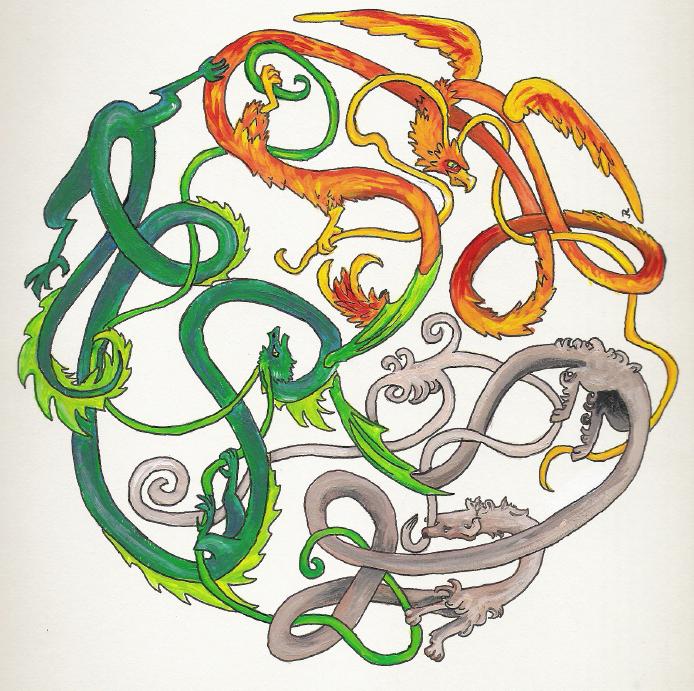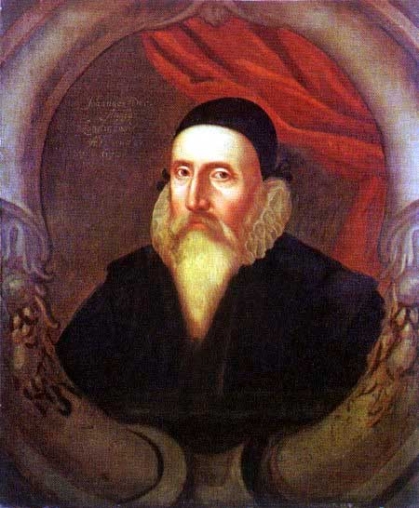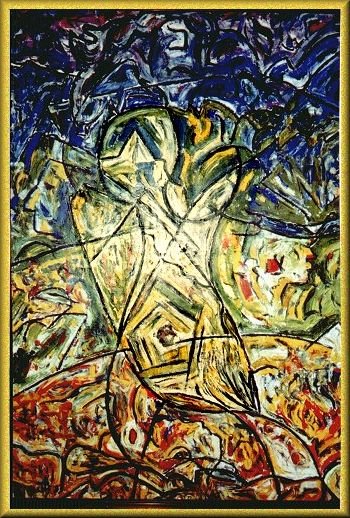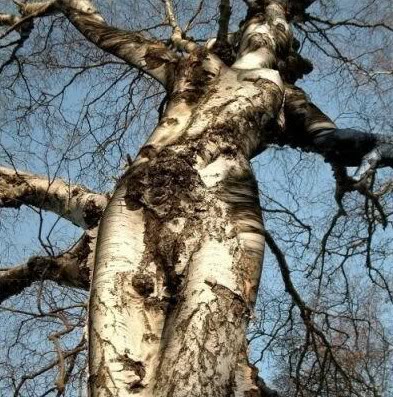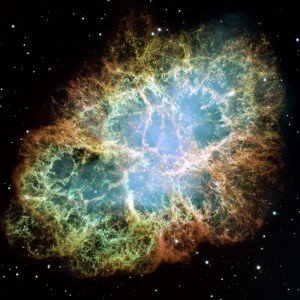Tonight I came home from work, ate dinner, and then got busy preparing some traditional foods – a bucket of salsa, a jug of beet kvass, and three buckets of sauerkraut! The more I explore the art of making food from scratch the more joyous it becomes and I wanted to share some reflections that came to me tonight.
First of all, getting into more traditional cooking is easier than it seems. At first having to work from raw ingredients, putting it all together by hand, seems intimidating for anyone used to pre-made supermarket convenience. But traditional cooking is like meditation – the effort invested quickly pays itself off and then starts raking in the interest on very favourable terms.
After only a little experience you begin to realise just how fun it is to make salsa or kvass or sauerkraut or whey & cream cheese. I feel deeply energised even though I worked all day and then spent more than a couple of hours in the kitchen.
I spent my time cooking listening to the music of Ironwood, which always makes me happy, and preparing food from raw ingredients involves a lot of repetition – cutting, and pounding the cabbage for the sauerkraut. This work provides brilliant doors for trance!
Everyone knows that repetitive rhythms can induce trance and in the process of my cooking tonight I drifted into some lovely and quite blessed states. I wandered through different worlds and I could literally feel the small wounds of daily life healing throughout my body from the altered consciousness into which I had drifted. What a bonus!
And of course it makes my soul happy to know that I am making fermented foods, which are super-nutritious and super-delicious and fun to make. My kind of traditionalism (small t used on purpose folks) is not ideological – I am neither against nor for the modern world, though I have many criticisms to make of it.
Rather, my kind of traditionalism is empirical in basis – for there is extensive and very sound science for the view that premodern approaches to cuisine are far superior to the high calorie, low nutrient rubbish so prevalent these days.
The fact that making food as healthy as sauerkraut (a far superior source of Vit C than any pill), or beet kvass (which cures allergy attacks, mouth ulcers, and jet lag with casual alacrity in my personal experience, as well as tasting divine) also connects me with the living experiences that shaped the mythic worldviews of old Europe is just beautiful, elegant even.
I really think that exploring such practices and ways is just as essential – perhaps more so – than even delving into mythology or runic artefacts or whatever. These simple domestic practices were and still can be the bricks and mortar which nourished the pre-Christian Heathen imagination.
You’ll notice that all the foods I made tonight – salsa, sauerkraut, beet kvass – are fermented foods. Fermentation is a fascinating thing. Before we had fridges we used fermentation to make food last – and it just so happens that fermentation (of which making alcohol is only a very small part) also loads up the food with nutrients and makes them super-easy to digest. A nice little bonus which we in our fridge-age unfortunately no longer reap.
Fermentation is essentially the art of letting food rot into something tastier, healthier, and longer-lasting than what it would be straight out of the ground. There’s something brilliant about the way this simple practice marshals the vast chemical complexity of food molecules.
One of the reservations I have about untrammelled technologisation is that it invites us into simplistic understandings of the world, since we begin to focus on what we understand and tend to forget that things are way more complex than we might like to think (a common problem that has been studied extensively in experimental psychology, and to which it seems even the most brilliant scientists have been found to be susceptible to).
But fermentation elegantly marshals the vast chemical complexities of food with a dead simple strategy – chop it up and let it sit at room temperature for a few days. Brilliant! I see fermentation as a brilliant analogy for various alchemical processes, and so as I make my fermented foods I experience it as a spiritual analogy, just as alchemists use the quest for gold as a physical metaphor for their spiritual quest for the philosopher’s stone, for enlightenment or healing.
This is one of those things that really illustrates the fact that spiritual life and everyday mundane life are not qualitatively different. They exist on a continuum and if we are imaginative, curious, and a little bit industrious we can shorten that continuum so that the spiritual permeates the everyday and the everyday permeates the spiritual. To me that is nothing more or less than animism in action, the gods living at one with our every breath. And isn’t that the whole goal of premodern spiritual paths such as Heathenry?
Incidentally, for those wondering, I’ve been doing more research on premodern lifespans and health. The only sound and genuinely empirical, quantitative study I found (other than Weston Prices’s work) looked extensively at fossils and human remains from before the current age, and also at contemporary premodern cultures (mostly hunter gatherers).
They found that the average lifespan under these conditions is in the mid 70’s. They also made some other surprising discoveries – for example it appears that infant mortality rates were not through the roof in these cultures!
From other archaeology material I’ve read – Barbarians to Angels provides some low key but very clear examples – it is clear that the premodern lifestyle produced good health generally, including good dental health. Monty Python’s mud-eating, snaggle-tooth peasants are hilarious, but they’ve maybe unduly prejudiced our ability to understand the lifestyles of premodern times.
This is all in line with Weston Price’s work on nutrition. His theory was that the premodern diets of many cultures were and are superior to modern processed diets because they are super-dense in nutrients and relatively low in calories – just the opposite of McDonalds, really.
Can anyone really argue with such a view? Certainly from reading Michael Pollan and Nina Planck it seems to me that rigorous research (and sadly much nutritional research isn’t) strongly supports this view.
So eating traditionally accords nicely with the modern scientific method, a perfect example of why “going back” to the past for inspiration can sometimes actually be much more scientifically sound than the reckless technical “innovation” to which we in the West are unfortunately quite invisibly addicted to.
Incidentally if you think you can’t afford to eat organic or small-farm grown you might like to look at what you do spend your money on…do we need cable TV, three cars per household member, 10,000 inch televisions, etc, etc? There’s more room in your budget for good food than you realise.
Raw ingredients, even organic or small-farm grown, have two other advantages – making food from scratch generally works out more economically than processed premade foods anyway, and also such foods (in Australia at least) are largely GST exempt, so its cheaper than you think.
Plus you can explore food co-ops, growing your own, etc, etc. If you are willing to use your imagination you can do it. That said, please don’t take my comments in a finger-pointing or moralising way. I’m hoping to inspire rather than harangue. Did I mention how fun and easy it is to make fermented foods?
Incidentally, from what I’ve read it also seems clear that premodern cultures traded food with one another extensively. The poisonous monoculture that lurks in this modern world is not a product of cross-cultural food munching, despite what some more ideologically based traditionalists might like to think.
Multiculturalism is not monoculturalism, and premodern peoples, from what I have read at least, loved to chow down on each others’ specialties.
Sauerkraut, that quintessential German dish, arrived in Europe with the Mongols. That doesn’t take away its special Germanic-ness, which has accrued quite legitimately over some nine centuries, it just reminds us that there’s a difference between cultural purity (which pretty much doesn’t exist and never did and is purely a modern fabrication) and cultural specificity (which clearly did and does exist since we can talk about distinctly unique and different groups, but which included intercultural exchange as one of its elements).
In other words, the isolationist tendencies of ideologically-based traditionalists are anachronistic and untrue to the ancestral ways – and do not in fact do much to safeguard the old traditions. How ironic.
As often is the case my writing jumbles together politics, philosophy, history, spirituality, mythology, domesticity, health sciences, psychology, and eating! We divide the world into neat categories but in doing so we lose our ability to understand it. As Mr Heinlein said, “specialisation is for insects.” My thoughts keep rotting up into more and more complexity and richness, and fermentation is a great metaphor for both the creative and the intellectual processes…
